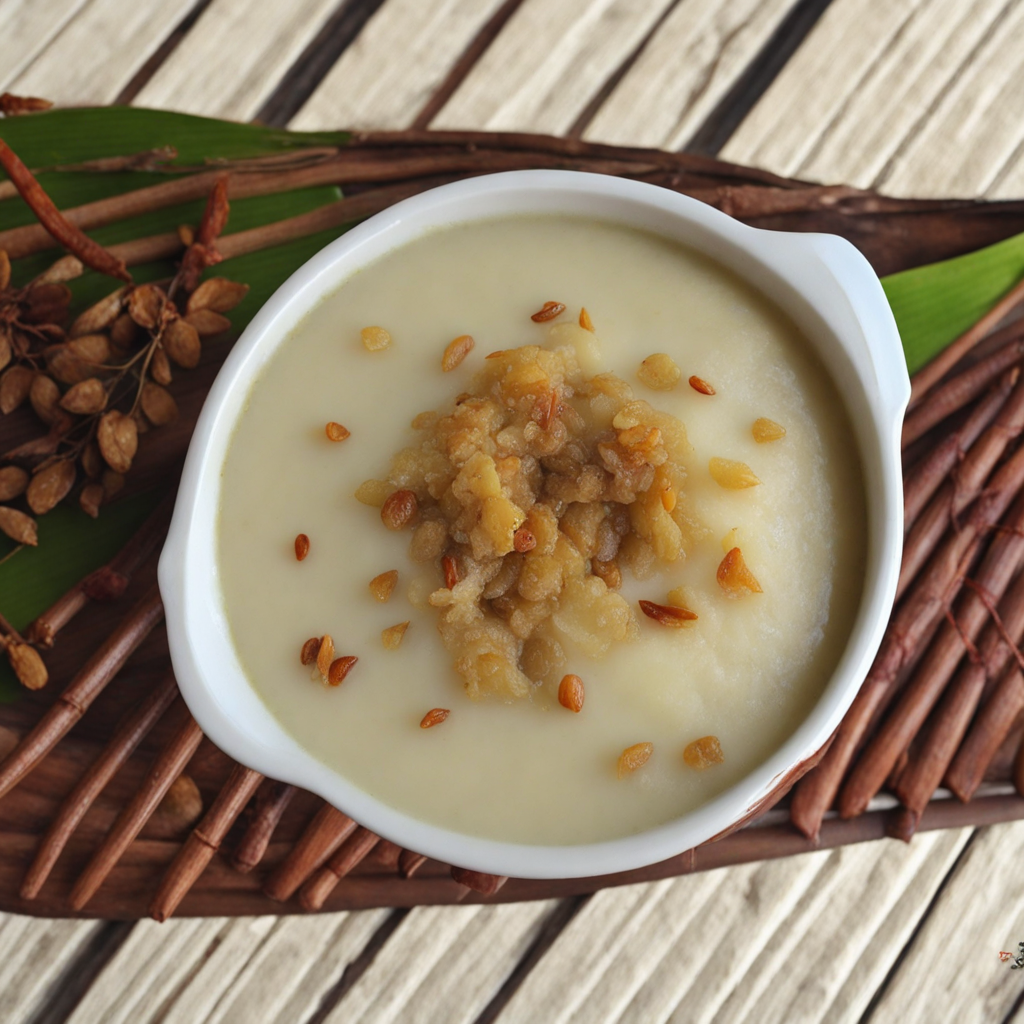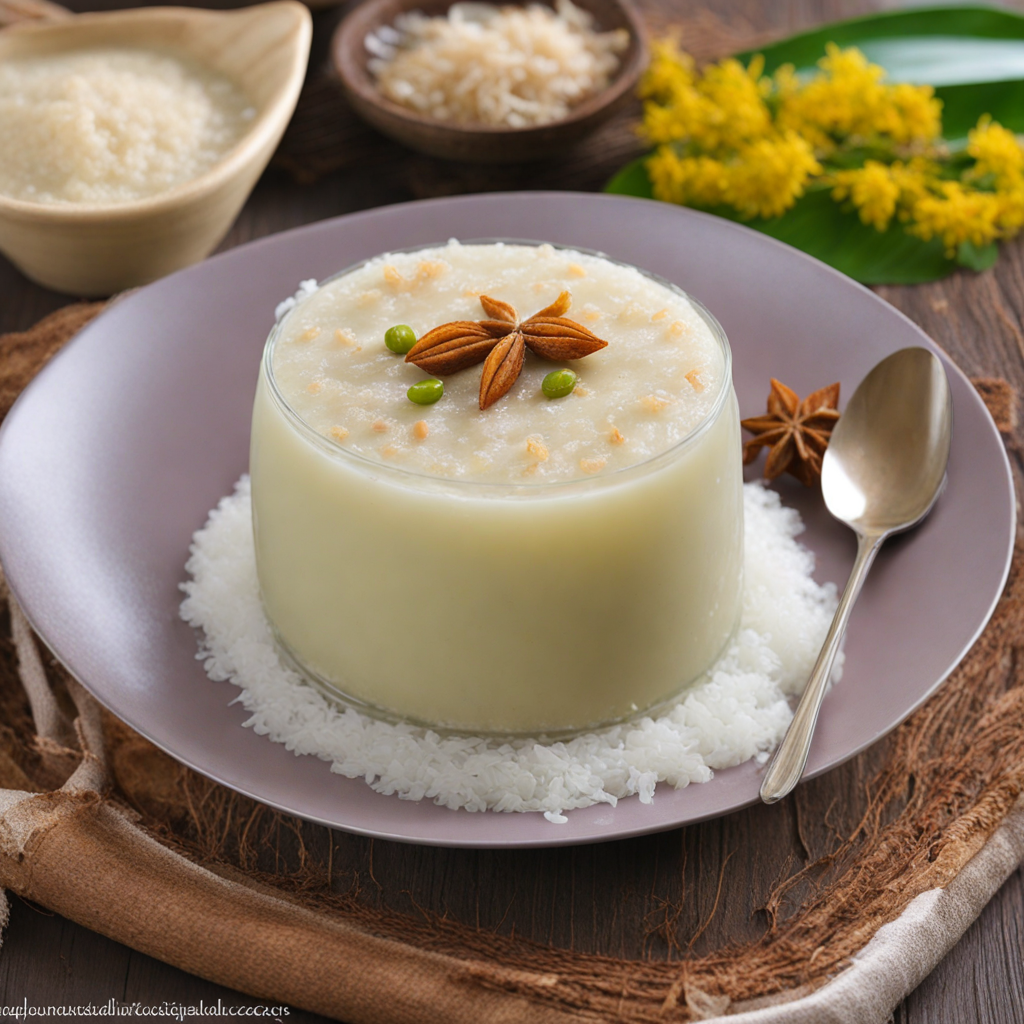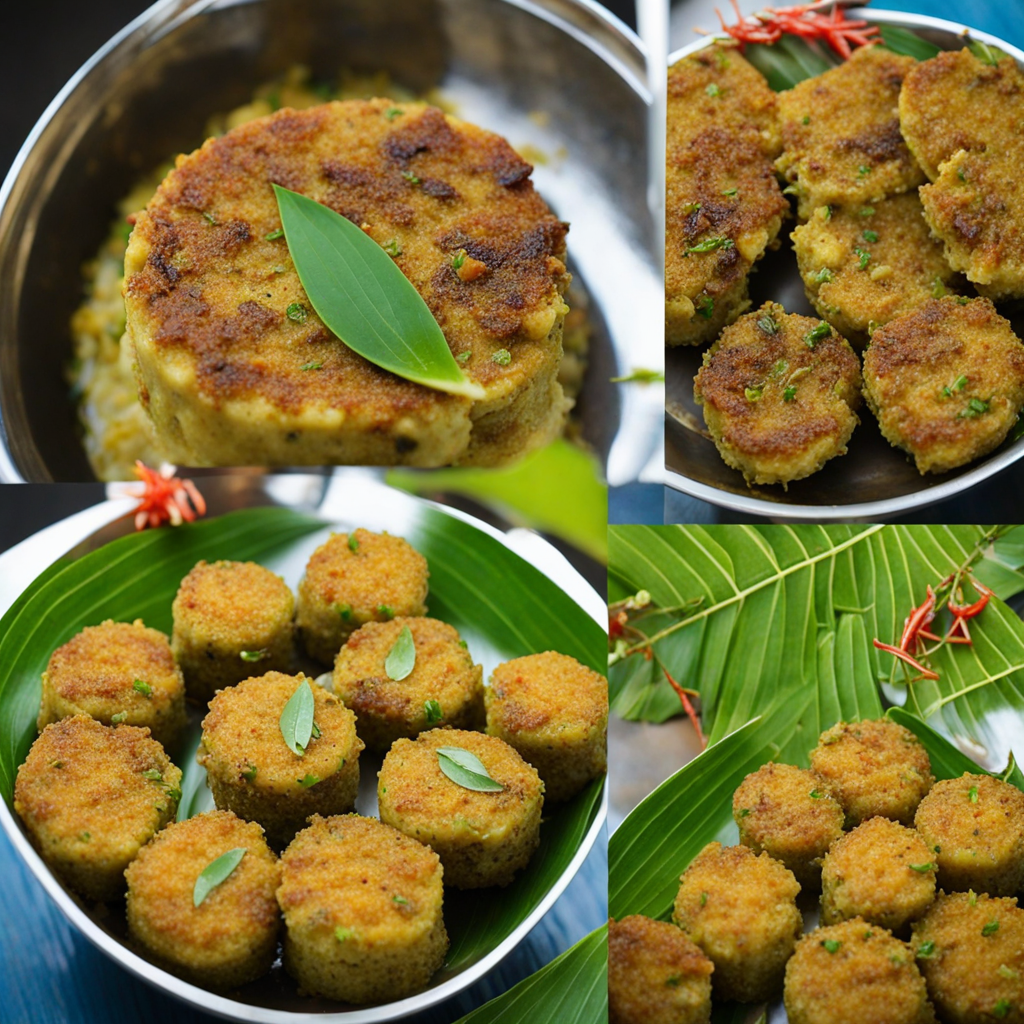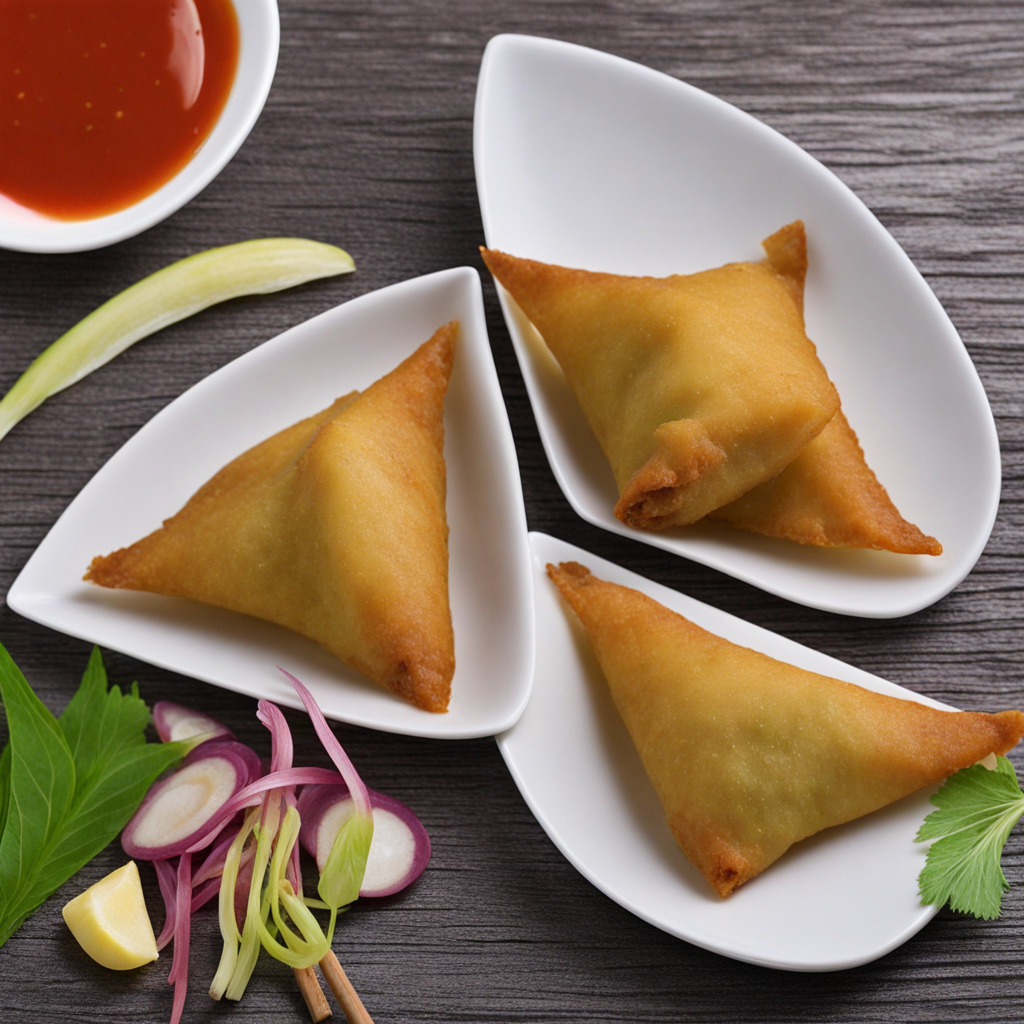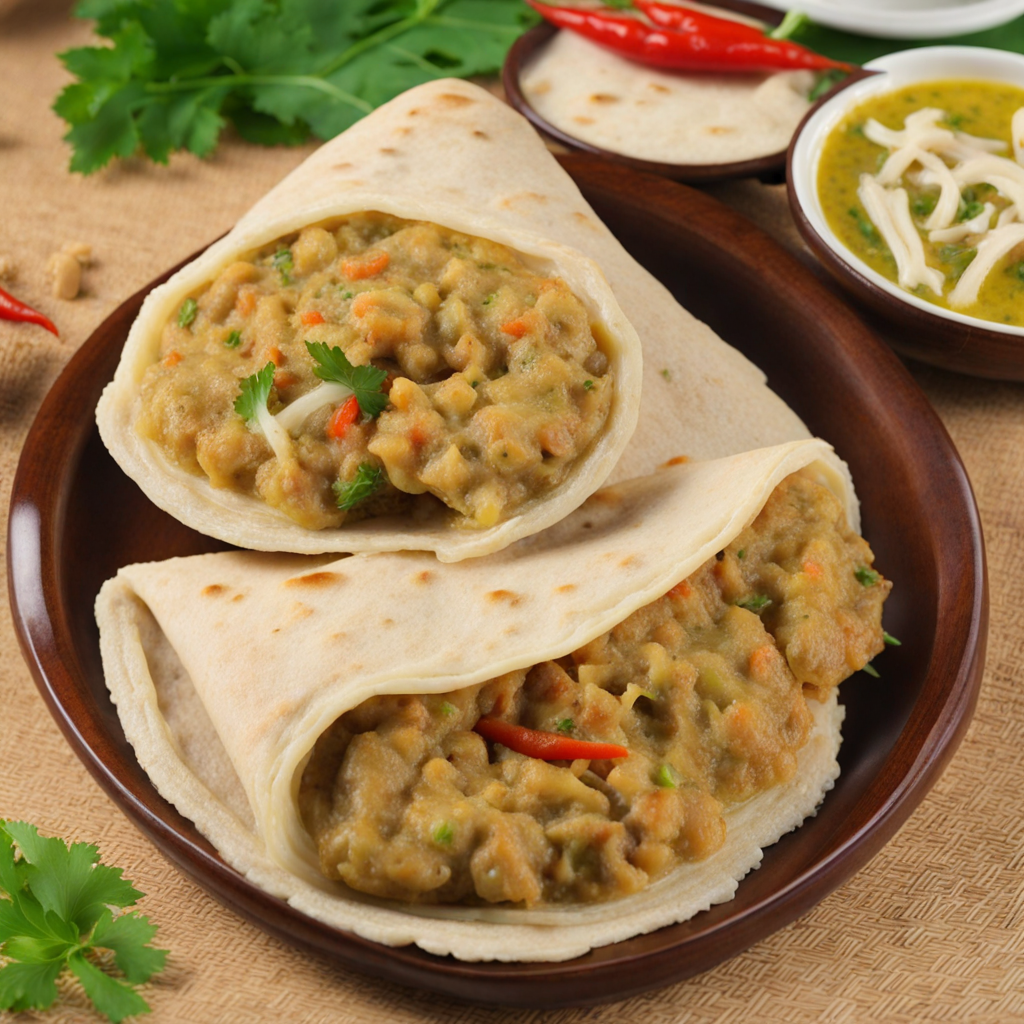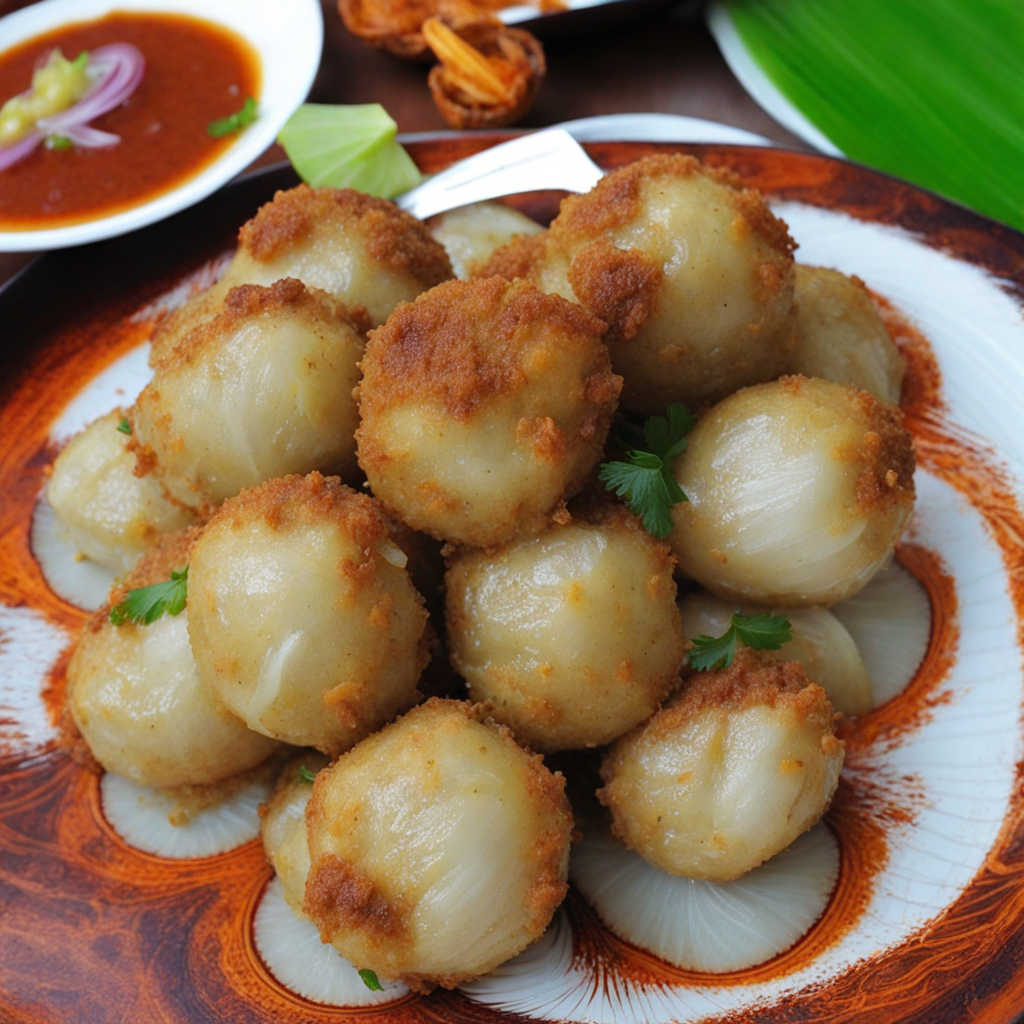Saagu Bondibai
Saagu Bondibai is a delightful dish from the Maldives that showcases the region's love for unique flavors and textures. At its core, this dish features sago, a starch extracted from the pith of the sago palm, which is cooked to a sticky, gelatinous consistency. The sago pearls take on a slightly chewy texture, making them a comforting base for the dish. The addition of coconut milk infuses a rich creaminess, creating a harmonious blend that envelops the palate in a tropical embrace. To enhance the flavor profile, Saagu Bondibai is often sweetened with sugar or jaggery, adding a touch of sweetness that contrasts beautifully with the savory notes of the coconut. It is commonly garnished with a sprinkle of grated coconut or a dusting of cinnamon, offering not just visual appeal but also an aromatic lift that tantalizes the senses. The dish can also be customized with various fruits or nuts, providing bursts of flavor and delightful crunch that elevate the overall experience. What makes Saagu Bondibai particularly special is its versatility; it can be enjoyed warm or chilled, making it suitable for any occasion or time of day. Whether served as a dessert, a snack, or a breakfast treat, this Maldivian dish invites you to discover the simplicity and richness of its ingredients, allowing the natural flavors to shine through. Each bite is an invitation to savor the laid-back, sun-kissed lifestyle of the Maldives, where food is not just sustenance but a celebration of culture and community.
How It Became This Dish
The History of ސާގު ބޮންޑިބޭ (Saagu Bondibaiy) from the Maldives #### Introduction Saagu Bondibaiy, a traditional Maldivian dessert, is a delightful dish that reflects the archipelago's rich cultural heritage and culinary evolution. Made primarily from sago, a starch extracted from the pith of tropical palm trees, this dish has become a staple in Maldivian celebrations, particularly during festive occasions and family gatherings. While its simple ingredients and preparation methods might suggest otherwise, Saagu Bondibaiy is a testament to the Maldives' intricate culinary history, influenced by trade, cultural exchange, and the islanders’ resourcefulness. #### The Origins of Saagu Bondibaiy The roots of Saagu Bondibaiy can be traced back to the early Maldivian communities, who relied heavily on the bounty of their natural surroundings. The Maldives, with its unique geography of coral atolls and abundant marine resources, led to a diet predominantly based on fish and coconuts. However, the arrival of traders and settlers from various parts of Southeast Asia, particularly from India and Sri Lanka, introduced new ingredients and cooking techniques that enriched the local cuisine. Sago, the primary ingredient in Saagu Bondibaiy, has a long history in the region. Though its exact introduction to the Maldives is difficult to pinpoint, it is widely believed that sago was brought to the islands through trade routes that connected the Maldives with the broader Indian Ocean world. The use of sago in desserts can also be found in many other Southeast Asian cultures, indicating a shared culinary heritage influenced by trade interactions. #### Cultural Significance Saagu Bondibaiy is not just a dessert; it embodies the spirit of Maldivian hospitality and community. Traditionally prepared for special occasions like weddings, religious celebrations, and family reunions, the dish serves as a centerpiece that brings people together. The process of making Saagu Bondibaiy often involves family members gathering in the kitchen, sharing stories and laughter while creating this beloved treat. This communal aspect of cooking reinforces familial bonds and maintains cultural traditions. The dish is also deeply intertwined with the Maldivian Islamic culture. During the month of Ramadan, when Muslims fast from dawn until sunset, Saagu Bondibaiy is often served as a sweet treat to break the fast, symbolizing nourishment and the joy of shared meals after a day of reflection and abstinence. In this context, the dessert transcends its role as mere sustenance, becoming a symbol of community, faith, and celebration. #### Preparation and Ingredients The preparation of Saagu Bondibaiy is a labor of love, often passed down through generations. The main ingredient, sago, is first soaked in water to soften it. This is followed by cooking it until it becomes translucent and gelatinous. The addition of coconut milk, sugar, and sometimes a hint of pandan or cardamom adds flavor and richness to the dish. The mixture is then poured into molds and allowed to set, creating a smooth and creamy dessert that is both visually appealing and delicious. Throughout its history, variations have emerged, reflecting regional tastes and ingredient availability. In some versions of Saagu Bondibaiy, fruits such as mango or banana are incorporated, adding an extra layer of flavor and texture. The flexibility of the dish allows for creativity, with some families adding their unique twists, making it a personal and cherished recipe. #### Evolution Over Time As the Maldives has modernized, so too has the preparation and presentation of Saagu Bondibaiy. With the advent of tourism in the late 20th century, the dish has gained popularity beyond the local population. Resorts and restaurants now feature Saagu Bondibaiy on their menus, often reinterpreting the traditional recipe to cater to international palates. This evolution has led to a broader appreciation of Maldivian cuisine, with Saagu Bondibaiy serving as a delicious ambassador of the archipelago's culinary heritage. Moreover, contemporary Maldivian chefs are increasingly focusing on sustainability and local sourcing. This has led to a resurgence in the use of traditional ingredients and methods, ensuring that dishes like Saagu Bondibaiy remain rooted in their origins while adapting to modern tastes. This commitment to preserving culinary traditions while embracing innovation reflects a broader trend in the culinary world toward authenticity and sustainability. #### Conclusion Saagu Bondibaiy is more than just a sweet treat; it is a cultural artifact that encapsulates the history, traditions, and communal spirit of the Maldives. From its origins in the early Maldivian diet, influenced by trade and cultural exchanges, to its significance in family gatherings and celebrations, this dish tells a story of resilience and adaptation. As it continues to evolve in a modern context, Saagu Bondibaiy stands as a symbol of the Maldives' rich culinary heritage, ensuring that the flavors of the past are celebrated and cherished in the present and future. In an increasingly globalized world, the preservation of traditional dishes like Saagu Bondibaiy serves as a reminder of the importance of cultural identity and the role of food in fostering connections among people. As Maldivians continue to share this beloved dessert with family and friends, they are not only honoring their culinary history but also creating new memories that will be passed down through generations, ensuring that the legacy of Saagu Bondibaiy endures.
You may like
Discover local flavors from Maldives


